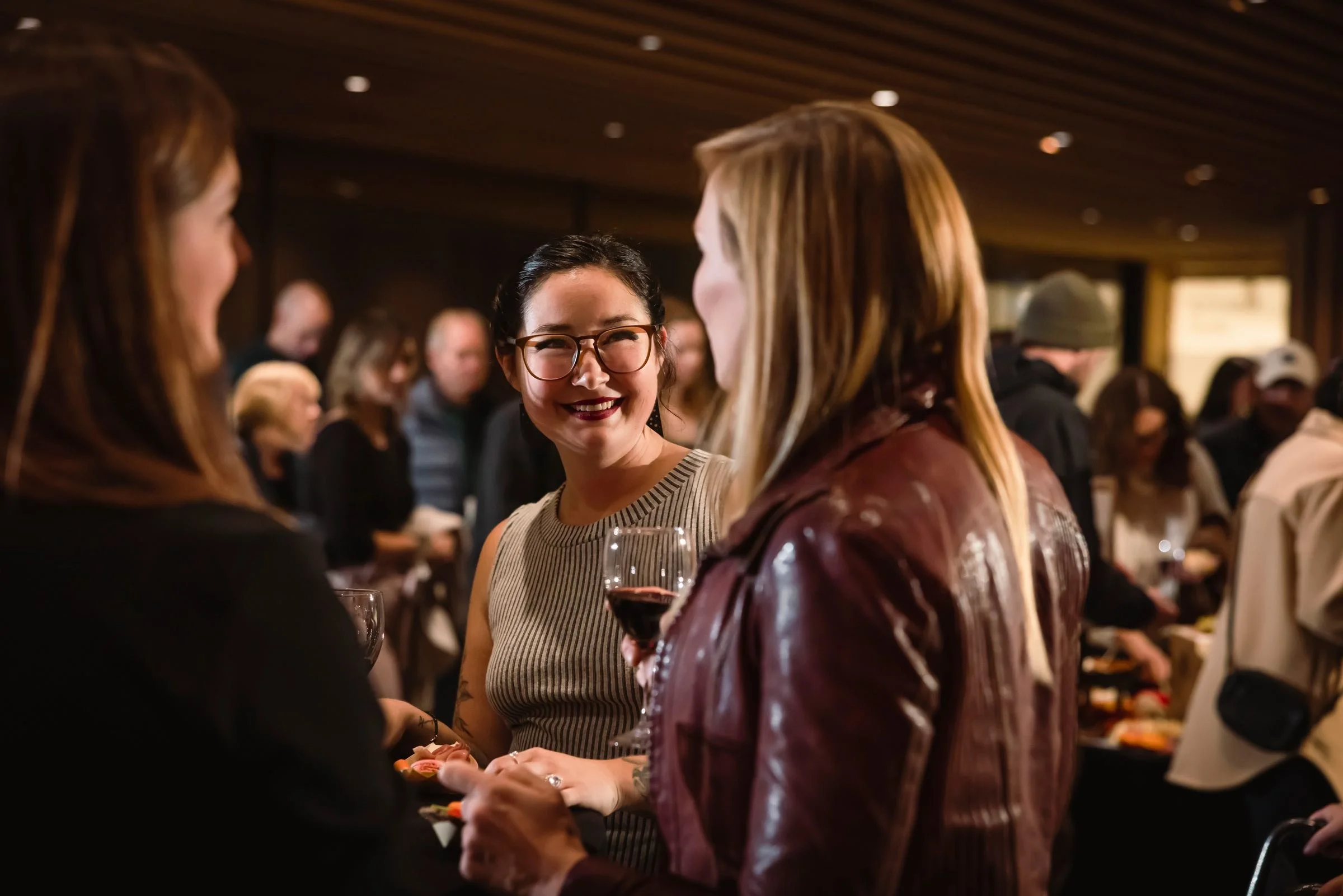Cellist Marina Hasselberg's new Red album merges artist's rich range of cultural influences
The Baroque, the avant-rock, the improvisational, and more mix fluidly in striking solo debut
Marina Hasselberg. Photo by Yukiko Onley
The Infidels Jazz presents Marina Hasselberg at the Red Gate Gallery (1965 Main Street) at 2 pm on October 16.
PRESSING “PLAY” ON Red, Marina Hasselberg’s solo debut, one is greeted by an enigmatic foghorn (didgeridoo? bass flute? Tibetan dungchen?) and an icy electronic wind, before the beautifully human tones of the Vancouver cellist’s instrument come to the fore. The electronics morph into digital surf and quiet clattering, but if the tune Hasselberg’s playing seems familiar, there’s good reason for that: it’s Domenico Gabrielli’s Ricercar Primo, one of the oldest extant compositions for solo cello.
On the line from her East Vancouver home, Hasselberg counsels the listener not to read too much into this elegant juxtaposition of the acoustic and the electronic, the very new and the nearly ancient.
“One thing that I didn’t want was for the first track to give an impression that it’s representing the whole album, because it’s clearly not,” she explains. “But in a way you can say that it is giving a signal that it is not going to be all Baroque music. There’s lots of different things.”
The term ricercar, she goes on to explain, comes from the same Latin root as research. And that’s also a clue, for while Red is an enjoyably coherent listening experience, it’s also a survey of the things that have intrigued Hasselberg since moving to Canada from her native Portugal in 2008.
Yes, there’s Baroque music, her first love. But there are also three structured pieces by B.C.–based composers, and six free improvisations made in conjunction with a shifting cast of local radicals, including Vancouver New Music artistic director Giorgio Magnanensi, who provided the electronics on that entrancing opening track; guitarist Aram Bajakian; drummer Kenton Loewen; and violinist Jesse Zubot, who also produced the record and mixed it at his Vancouver Island studio.
Moving here, Hasselberg contends, has not only meant learning to negotiate a new society and perfecting a new language; it’s allowed her to explore her musicality in ways that might have been impossible elsewhere.
“Musically speaking, I was educated in a very conservative classical setting,” she says. “But part of me always felt that I really cannot feel fully a musician if I’m not playing my own notes. Of course, interpreting others’ pieces has a lot of me and what I think about those pieces—but they’re not my material, right? It’s someone else’s story that I am reinterpreting. So improvisation was always something I’d been interested in but never had a chance to do, mostly for reasons of time and energy. But once I got to Vancouver and finished all my schooling, then I gave myself permission to finally take time and explore and do something that I always felt like doing.
“It’s one of those things of accepting that this is my language and what I have to say, and that I have to do it for myself,” she adds. “If someone else likes listening to it, fantastic! And if they don’t, that’s fine, too. I don’t make any assumptions in that sense; I just like doing it if I’m invited to do it, which I often am.”
Hasselberg is understandably drawn to composers who share her expansive vision, and her considered interpretation of Linda Catlin Smith’s Ricercar is both a recursive nod to Gabrielli and the Baroque tradition and one of Red’s highlights. Over nine appropriately searching moments, her cello hints at liturgical music, 20th-century brutalism, and sombre meditation, before eliding gracefully into the improvised “Feras”, which consists mainly of low drones, scrabbling overtones, and Loewen’s enigmatic drum patters. The “search” implicit in the first piece is fully embodied in the sonic landscapes of the second.
“Ricercar I love, because it kind of blends my two big passions, which are baroque music and modern music,” the cellist says. “Linda is not a cellist, but she writes really well for the cello. It’s actually a very interesting piece, and very different that any other piece I’ve ever played before. It’s very, very original, but you have some kind of freedom. The metres change; there is flexibility. so, in a way, it’s close to the language of improvisation.”
Martin Reisle’s At a Distance is another remarkable example of the two worlds colliding. On one level, it’s a showcase for Hasselberg’s dexterity; as she points out, the composer has “figured out a technique of playing several notes at a time with the bow, and also plucking simultaneously with the left hand. This makes it extremely complex and challenging to play, but it gives it a very full sound. It’s a very, very beautiful piece.”
And At a Distance became even more beautiful, she adds, when producer Zubot suggested that Bajakian overdub a layer of distorted electric guitar on top of Hasselberg’s solo reading. “I absolutely adore what it turned out to be,” she says. “Besides all the cello’s complexity, it has this incredible electric guitar melody-slash-solo going on on top. The solo version, with only the cello part, is gorgeous, but it’s more of an intimate thing and the guitar makes it huge. It’s more like a movie soundtrack, it’s so emotional and so intense.”
That intensity fades into the glitchy whooshing of the improvised “Signal”—again, like the opening track, a duo for Hasselberg and Magnanensi—before Red concludes on an almost sweet note with Craig Aalders “Things Fall Apart”. It’s the prettiest piece on the record, and a rather comforting finale to a debut that has moved confidently from considered formality to abstract landscapes to almost avant-rock tones.
“The reason why it ended up being this mix of materials is because, in a way, that’s all part of my history,” Hasselberg says. “I finally decided to accept that I don’t have to choose between one style or another; I can perform a mix of all these beautiful things that I like playing. That’s kind of what this album represents for me: that acceptance and celebration of a rich cultural and musical background that allows me to mix many different kinds of music.
“And I think we’ve done that very well,” she concludes. “It’s an album that one can hear as a unit, as a whole, without thinking ‘Okay, we’re jumping from classical to improvisation to new music.’ For me, it feels very whole, and very beautiful.”
She’ll get no argument from me.













